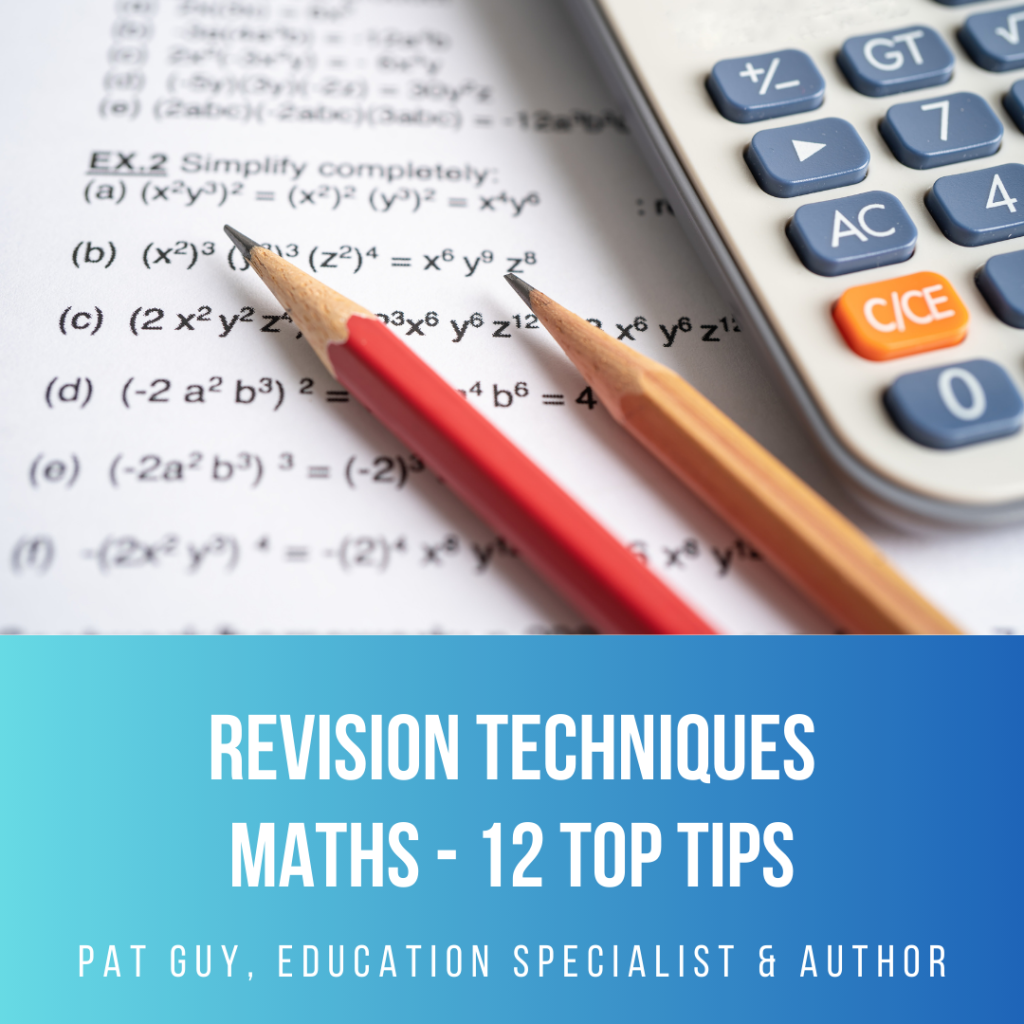Revision Techniques
Maths – 12 top tips

- Before starting to revise, organise your files and notes.
Divide your Maths files into topics, so you have an overview of all the information that needs to be covered. Fill in any gaps or add further information you think might be useful, for example, a few worked examples of separate aspects of a topic.
2. Devise a realistic revision timetable.
Divide revision into short sessions. Revise for 40 minutes, then take a break. Allotting a specific amount of time to a topic, makes it easier to concentrate. Allow for downtime in your timetable: guilt free time to meet up with friends, watch TV, play football, go shopping or to the cinema.
3. Revise by doing.
Reading through your notes will not be enough to make the information stick: you will have to actually do something, engage your brain and really think about the topic. This sort of revision might include activities such as: organising a mass of text into a mind map or flow diagram; numbering the steps required to solve a calculation; playing interactive games on computer revision sites; revision sessions with friends; creating question and answer cards for self-testing or watching video clips.
4. Ask for help.
If you are stuck on a topic or a question, ask a friend, older sibling, someone from your class, your teacher, someone at home, or look on the internet for help. Attend any Maths revision clinics that school offers. Seeking 1:1 guidance from a teacher will clarify any information you have found hard to understand.
5. Use past papers.
Past papers are an excellent way to revise Maths. Past papers will help you to identify the types of questions that challenge you most, and will therefore need more revision. Are wordy problems a weakness? Or perhaps quadratic equations?
6. Practice time management.
Working through old papers will give practice in working under timed conditions, as well as improving your exam technique, for example, by checking the marks available for different questions and managing your time accordingly.
7. Use IT.
Make flash cards or flow diagrams using the computer, play maths games and quizzes, watch demonstrations of working through calculations, or on-line animations. These sorts of activities will help you to revise in a visual way and be more engaging. Visual input helps a lot of learners to remember facts, so use colour, highlighting, numbering, diagrams, drawings or cartoons.
8. Revise with friends.
You may find it useful to teach each other topics or devise question for the others to answer. By explaining information to others, your own understanding will improve, and you may learn different memory and revision techniques. It may be possible to work for longer periods if you are not alone.
9. Rotate revision between different Maths topics.
Change will help you to maintain your focus, and prepare you for exams where you will have to move quickly between topics.
10. Revise basics.
Always revise the basics: a solid understanding of the foundations of a topic is essential when answering more advanced questions. Make sure you know basic formulae and rules – not all of them will be provided in an exam.
11. Use revision guides and publications.
Check the content aligns with your syllabus, so you don’t waste time covering anything that is irrelevant to your course.
12. Attention to detail.
Careless errors will lose you marks. Be aware of this and make a supreme effort to focus.
Carefully read and interpret each question to avoid unnecessary mistakes, particularly with wordy problems. Follow command words to make sure you are giving the answer that being asked for.
Check your answers make sense and are not completely ridiculous.
Follow instructions exactly: if the answer is to 3 sig figs, give the answer to 3 sig figs. When the given unit is in kilograms, however the problem asks for the answer to be in grams, give the answer in grams.
Check that when the question referred to 57%, you didn’t write down 51% by accident. Take particular care to enter numbers accurately into the calculator.
Your handwriting will be less legible when working at speed. Try to write as clearly as you can: perhaps making your writing a little bit larger than normal or writing on every other line to add more white space.